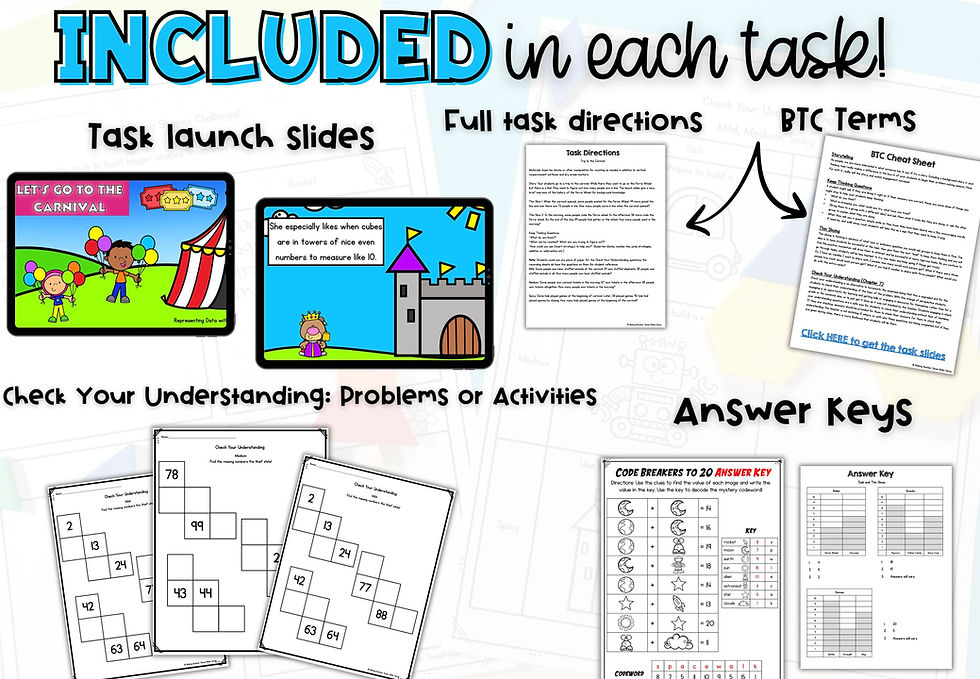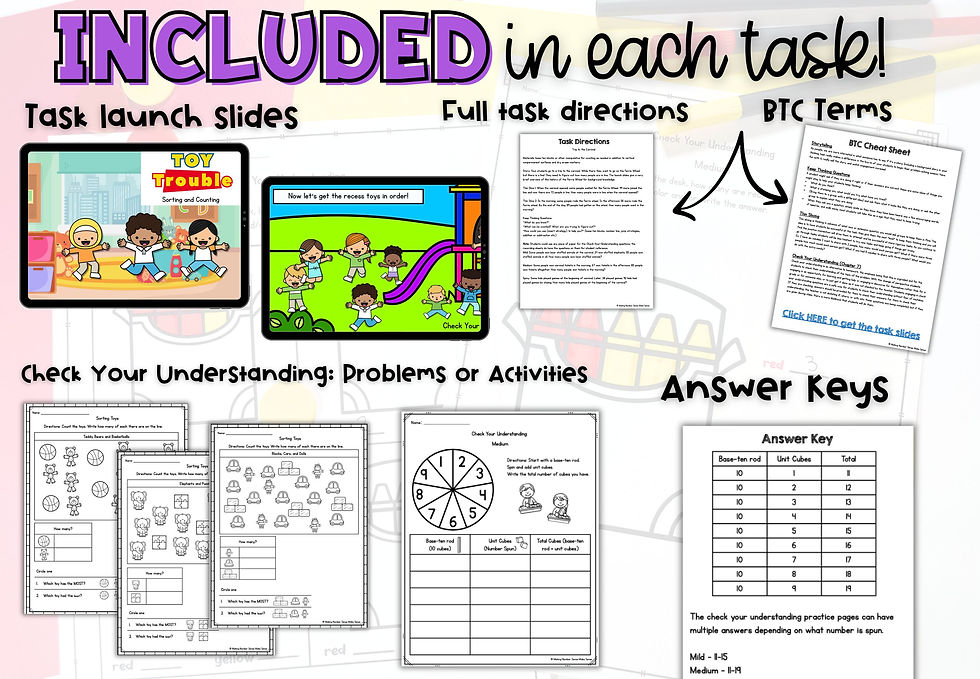What is One to One Correspondence?
- Lara

- Apr 25, 2023
- 2 min read
What is one-to-one correspondence in math?
1 to 1 correspondence is the skill of being able to count one object as you say one number either by touch (like with dice), by moving objects one by one, or as they develop their skills, they can track what they are counting by sight or pointing instead of touching. Counting by sight only is a more advanced skill so if I have emergent counters, I encourage them to use a counting strategy.

Often students will have one-to-one correspondence to the number three or the number four but once they get beyond that they start to lose the concept that one thing goes with one number that they're Counting. I usually call it the hover finger because they start to just say all of the numbers and their fingers just all around the things that they're counting or they just keep touching things and saying numbers that aren't in the number sequence.
When starting to learn to count, I often like to introduce students to different strategies they can use to count accurately.

The Strategies
I always introduce strategies as a way to help you but if you have your own strategy that works for you do that. I like to offer support to students who need it but definitely don't want to stifle any students who are developing their own strategies because ultimately we want them to be able to develop a strategy that will work in any situation.
Move It
In this strategy, I like to talk to the students about being able to move the objects that they're counting and if you can move something then you should. a lot of times when students are counting larger items they won't move them away they'll just touch them but that can lead to double counting or missing things so I teach them to pick up the object that they're counting and move it to a different pile so they know what they've already counted and what they still have to count.
Touch It
When an object can't be moved I tell them to use this strategy where they're touching the object that they're Counting instead of moving it. This strategy is a great one for dice since they can't move the dots away from what they're counting and other things of that nature.
Double Check It
If you teach young kids you know that everything is erased to them and with the “Double Check It” strategy I really like to stress to them that mathematicians double-check their work if they're not sure or they might have gone too fast. I also let them know that it's okay to start over if you realize that you got confused because it's great for you to be thinking about what you're doing and see that you might have made a mistake and go back and fix it then just leave it.
If you're having your students play some kind of partner game then this is a great job for the other partner so maybe one partner does the counting and moving and the other partner double checks and then they switch jobs if you're doing a counting lesson to gamify what you're doing.
Let me know if you use the strategies with your students!




Comments